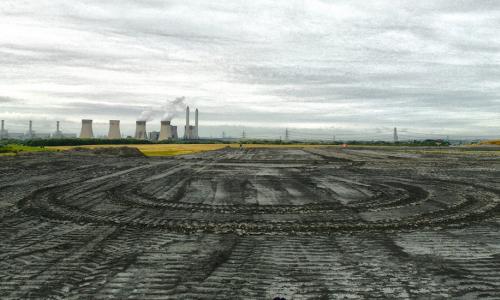An accident at a nuclear plant could injure people, damage the environment, and cost billions of dollars to clean up. Thus, safety at the 104 nuclear power plants operating in the United States is of vital importance.
Nuclear power plants are complex systems with multiple backups; many things must go wrong for an accident to occur. But maintaining safety margins requires constant vigilance: inspectors and tests must identify faulty equipment, and accurate procedures must guide workers so that they do not make errors.
Unfortunately, safety margins are continually challenged. Equipment can wear out faster than expected. And pressure to remain competitive under electric utility deregulation can result in cost cutting, which can in turn lead to poor safety monitoring or slow response to known problems.
The Nuclear Regulatory Commission (NRC) is responsible for tracking performance and enforcing safety regulations at nuclear power plants. But many observers (most recently the US General Accounting Office) have criticized the NRC's assessment program for failing to detect declining performance in a timely manner. UCS decided that we could not rely on the NRC, so we developed our own monitoring program. We are interested in determining how effectively plant owners identify and respond to safety problems. Assessing such performance is key to determining whether safety margins are being maintained or eroded as nuclear power plants age and come under pressure to compete. However, our focus is not on performance at individual plants but on the pattern of response across plants and what that suggests about safety throughout the industry
The UCS monitoring program
UCS monitors safety margins at 10 nuclear plants. To be certain that our focus group represents the industry as a whole, we chose plants from each category of reactor type and containment design. We also sought diversity in geographic location, utility size, ownership (private or public), and configuration (single or multiple reactors). This representative approach allows us to determine whether a problem at a focus group plant might affect a larger population--perhaps all the plants in the same category, all the plants operated by the same owner, or even all operating plants.
To examine safety margins, we review publicly available documents, including both plant and NRC reports. We try to determine what these reports indicate about how plant owners responded to the reported incidents--in particular, whether their performance met, exceeded, or failed to meet federal regulations. We use a standard set of questions (see left) to evaluate safety incidents.
The good
Some of the individual results from our monitoring program were encouraging. In a number of cases, plant owners took proactive measures such as conducting inspections for or training staff to prevent problems experienced at other plants. In other cases, plant owners looked beyond single problems to seek out and correct related problems. Not only were problems resolved completely, but the likelihood of future problems was greatly reduced. The actions reflect a healthy--and necessary--attitude toward nuclear safety. In addition, most problems at the best-performing plants (Oconee, Oyster Creek, and Surry) were minor. They were discovered quickly and fixed properly, suggesting a healthy regard for the importance of safety at all levels. Such actions demonstrate that safe performance levels can be achieved.
The bad
Unfortunately, responses to only 15 of the 200 reported incidents received high scores. (This is not completely unexpected, since positive or routine performance often goes unreported.) Performance receiving the lowest scores all involved repetitive problems with safety equipment that had been tolerated and left uncorrected for years--in one case, for decades. Safety equipment intended to protect the public during an accident broke, and procedures proved inadequate. (The plants with the worst performance were Cooper, LaSalle, Millstone, and Sequoyah.) The significance of these near misses must not be discounted simply because accidents did not occur. Safety margins must be maintained at every nuclear power plant at all times to assure that backup is available when needed.
The ugly
While response to individual incidents says a lot about safety margins at the plants where they occurred, such response says nothing about the industry as a whole. Only the patterns of response across all incidents in the entire focus group can provide those lessons.
The most serious finding of our monitoring program throws the safety of the entire nuclear power industry into question. None of the internal auditors at any of the focus group plants identified a single one of the more than 200 problems reported last year. These auditors are supposed to be the linchpins in the plants' quality assurance programs--programs mandated by federal regulations. Their entire purpose is to detect problems. This widespread breakdown in quality assurance clearly reflects a lack of industry and NRC emphasis on safety.
Federal regulations require plant owners to inspect and test to find safety problems. In theory, the NRC inspectors should not find any problems--a plant's owners should find them all. In practice, the NRC inspectors identified about the same number of problems as the plants' testing programs did, showing testing to be surprisingly ineffective.
Poor procedures and worker mistakes were responsible for most of the problems. Since all the plants are over 10 years old and thus well past the "break-in" phase, revisions in procedure and training programs should have minimized problems from these sources. The gravity of these findings cannot be overemphasized. Human error and faulty procedures were major factors in both the Three Mile Island and the Chernobyl disasters.
On the other hand, few of the problems resulted from maintenance activities. As a result of recent NRC emphasis, plant owners have devoted considerable resources to improving maintenance practices, clearly to good effect. This suggests that regulatory attention that prompts comprehensive industry reaction can successfully reduce problems.
What's the remedy?
Plant owners need to examine their staffs and procedures to determine whether the problems UCS identified in the focus group are also problems at their plants. Some plants will need to provide internal auditors with better training or incentives to identify problems and their workers with additional training or greater oversight to reduce errors. At other plants, procedures will require revision so that they prevent rather than cause problems.
The NRC needs to improve its enforcement of federal regulations, particularly with regard to quality assurance. When a plant does not comply, the NRC must stop unsafe operation.
Finally, the US Congress should formally review the NRC's regulatory effectiveness to make sure that public health and safety are adequately protected. This inquiry should happen now. It should not be deferred until after the next major reactor accident.



